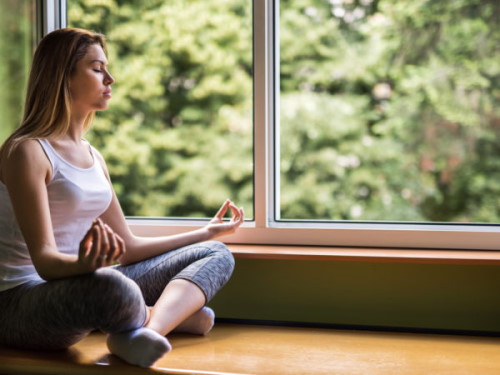Stress is your body’s natural defense against danger. It pushes the body to either fight-or-flight. During times of stress, your heart races, muscles tighten, and breathing quickens. Muscles become tense, and sleep decreases. Short-term stress may go away quickly. However, chronic, long-term stress can be problematic and harm your health. Adopting a deep, rhythmic breathing technique is relaxing and can help ease anxiety. Here’s the best way to breathe when you’re stressed.
BREAKING: Eat This - Never Forget A Single Thing Again
Acute vs. chronic stress
We all experience stress. It’s a feeling of physical or emotional tension. It can come from any situation or even a thought that makes you feel angry, frustrated, or nervous. It’s a part of life and essential for survival. It actually helps motivate you to reach your goals. But it’s also a warning system that protects you from harmful situations like avoiding collisions or walking into dark alleys at night. This is acute stress. However, when stress lasts longer because you can’t stop worrying day-to-day about situations such as marital problems, work trouble, or money issues, then your stress has become chronic. Before you know it, you’ve become so accustomed to the chronic stress in your life that you don’t even realize there’s a problem — until it leads to poor health. According to MedlinePlus, chronic stress puts you at risk for the following medical conditions:
- Weight gain and obesity
- High blood pressure and heart disease
- Anxiety or depression
- Diabetes
- Skin problems like eczema and acne
- Problems with your menstrual cycle
When chronic stress takes hold, it can affect your emotions, physical health, behaviors, and even your ability to think clearly. To help you get through those stressful moments, Dr. Andrew Weil has developed a new breathing pattern based on pranayama, an ancient yogic technique, which can help you get your anxiety and breathing back in control. Some people even claim that this breathing method can help you to fall asleep in one minute.
Learning to breathe again
Research suggests that diaphragmatic or deep breathing can positively impact a person’s anxiety and stress levels. It’s thought to trigger relaxation responses that can benefit you both mentally and physically. Learning how to breathe again is the basis for meditation and yoga and can bring you back from moments of stress by lowering your blood pressure and slowing your heartbeat.
Your diaphragm is actually a muscle at the base of your lungs. It plays an important role when breathing, although you may not be aware of it, says Harvard Health. Whenever you inhale, your diaphragm tightens and pushes downward, which creates more room in your chest cavity — allowing your lungs to expand. But when you exhale, your diaphragm moves upward and relaxes in the chest cavity. We all know how to breathe properly from the moment we are born. However, as we age, our breathing technique worsens. Whether it’s due to habit, stress addiction, or simply sucking in our gut, we shift towards more shallow breathing, which basically means holding onto carbon dioxide and not releasing it properly.
The 4-7-8 breathing technique
It’s believed that Dr. Weil’s 4-7-8 breathing technique can help separate you from stressors by reducing your anxiety, anger responses, and cravings. It can also help you fall asleep faster, instead of hyper-focusing on problems the minute your head hits the pillow. First move into a comfortable sitting or lying position (to prevent dizziness or falling). Next, place the tip of your tongue on your palate just behind your top front teeth. Now focus on the following breathing technique:
- Empty all air from your lungs
- For four seconds — breathe-in quietly through your nose
- For seven seconds — hold your breath silently
- For eight seconds — exhale forcibly through your mouth, while pursing your lips and making an audible “whooshing” sound.
- Repeat the series four times
Weil suggests using the breathing technique twice a day to begin reaping the benefits. However, he also advises that you only do four breath series in a row — for about a month — until you are comfortable with the technique. If for whatever reason, you can’t hold your breath long enough, then try a shorter breathing pattern.
- For two seconds — breathe-in quietly through your nose
- For three and a half seconds — hold your breath silently
- For four seconds — exhale forcibly through your mouth, while pursing your lips and making an audible “whooshing” sound.
TRENDING: Newly Legalized Herb Relieves Pain - Available Without A Prescription
Keeping the pattern is more important than how many seconds your breath is held. Work within your comfort zone.
Now more than ever — stress has become part of the American culture. Why does this simple breathing technique work? For that very reason…it’s simple. The pattern of breathing actually calms down your nervous system by signaling to your brain to release calming chemicals.
- Inhaling for four seconds makes you purposely take in more oxygen.
- Holding your breath for seven seconds allows as much of that oxygen as possible to enter your bloodstream.
- Exhaling for eight seconds forces you to expel as much carbon dioxide as possible from your lungs.
In short, this 4-7-8 breathing method is a “natural tranquilizer” for stress and anxiety relief. Give it a try to help your body relax and melt away tension.









